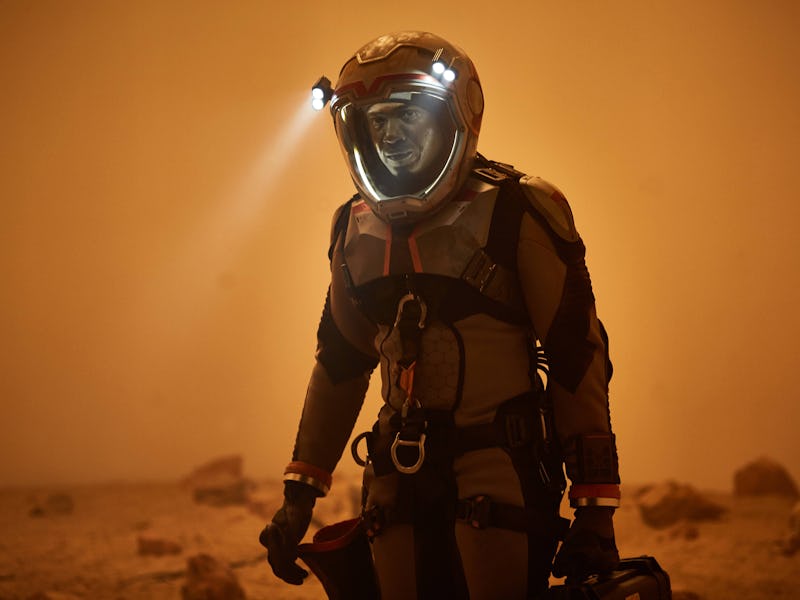In the 2020s, tiny biosensors could make a 911 phone call from Mars
When you're far from home, you need to know if you're sick before you feel it.

NASA scientists are often keen to point out the utility of the tech on which they’re working. If something is built just for the International Space Station, after all, it might not justify millions in taxpayer dollars. That’s why they’re constantly looking for ways their inventions could work on Earth. By the end of the next decade, NASA scientists are hoping that the biosensors they’re developing today will be as commonplace in gyms and farms as they will be on journeys to Mars.
These biosensors are being developed by NASA and the private-public group NextFlex, which connects companies, academic institutes, and non-profits with local, state, and federal entities. NextFlex’s projects vary from smart bandages to flexible Arduino computers, what they call Flexible Hybrid Electronics, FHE. so it only makes sense that they’re want to take on a project with the chance for wide application.
This is #19 on Inverse’s 20 predictions for the 2020s.
NASA is focused on the hardware of these biosensors. That’s a big challenge on its own, considering the goals of the project. NASA wants these biosensors to be smaller than a dime, essentially just a dot, and for that to be enough to bring forth a multitude of data on the wearer’s health.
A biosensor the size of a dime.
Their plan? Stuffing as many as 16 carbon nanotubes (CNT) into the biosensors. CNTs are remarkable tiny cylinders made up solely of carbon atoms. They have similar properties to silicon, except lighter and smaller. That gives them an incredible ability as transistors.
Transistors can switch on electronic signals. For example, if an astronaut were to sweat while traveling to Mars, the tiny sensor would detect the cortisol and be able to alert scientists back home on Earth.
NASA sees that type of power being very useful on Earth.
Talking to Inverse, Dr. Meyya Meyyappan, Chief Scientist for Exploration Technology at NASA’s Ames Research Center in California’s Silicon Valley, was quick to point out that these biosensors will not be limited to human health. They could be configured just to track the health of a head of lettuce, for example, or potatoes. Individual fruit and vegetables could be monitored with the highest level of exactitude.
Currently the Center for Disease Control uses what are called culture-independent diagnostic tests (CIDTs) to identify health borne sickness in patients. These tests, according to the CDC, “can identify the general type of bacteria causing illness within hours, without having to culture, or grow the bacteria in a laboratory.” Cheap CNT biosensors could allow scientists to apply that same level of science at the source of the foodborne illness, the food itself. That could be immensely help astronauts growing their own crops in space, as well as farmers tilling the soil on Earth.
As 2019 draws to a close, Inverse is looking to the future. These are our 20 predictions for science and technology for the 2020s. Some are terrifying, some are fascinating, and others we can barely wait for. This has been #19. Read a related story here.